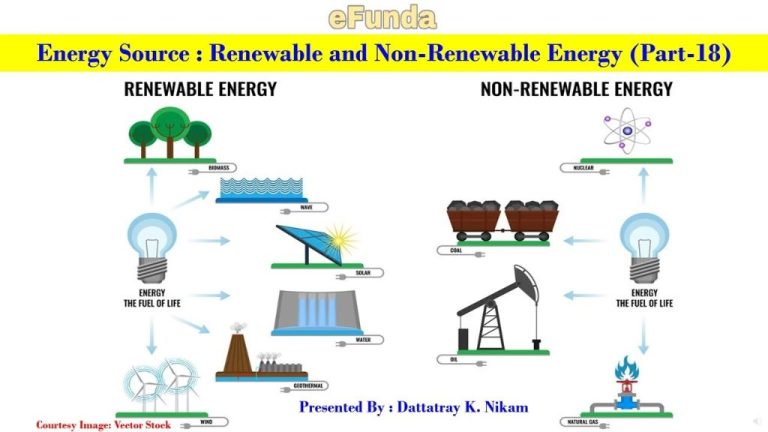What Will Happen If Renewable Resources Run Out?

Renewable resources are materials that can be replenished naturally over time. Examples of renewable resources include solar, wind, geothermal, biomass, and hydropower energy sources. Renewable resources are important because they provide sustainable alternatives to finite fossil fuels and other nonrenewable resources.
Renewable energy sources like solar, wind, and hydropower harness naturally occurring flows of energy from the sun, wind, and water to generate electricity. Biomass energy uses organic material like plants and animal waste as fuel. Geothermal energy taps into the earth’s internal heat for power generation. These renewable sources can be replenished through natural processes and are considered infinite when compared to nonrenewable resources like oil, natural gas, and coal.
The development of renewable resources helps reduce dependence on fossil fuels, enhances energy security, decreases pollution and greenhouse gas emissions, and stimulates economic growth through job creation and technological innovation. Renewables will be critical for the transition to a clean energy future and sustainable development.
For example, a key study from the Quora noted “Renewable energy can play an important role in U.S. energy security and in reducing greenhouse gas emissions.” Additionally, A Kid’s Guide to Renewable Energy emphasized that “Most of the electricity that people use comes from fossil fuels. Fossil fuels come from deep in the ground and will eventually run out. Renewable energy comes from sources that nature replenishes.”
Current Reliance on Renewable Resources
Many countries around the world currently rely on renewable resources for a significant percentage of their energy needs. According to data visualized on Reddit, as of 2020, the countries with the highest percentages of renewable energy were Iceland (77%), Norway (74%), and Austria (33%) [1]. The most common renewable energy sources utilized globally are hydropower, wind, solar, geothermal, and biomass.
There has been steady growth in renewable energy generation over the past few decades. According to the International Energy Agency (IEA), the share of renewables in global electricity generation increased from 19% in 1990 to 26% in 2018 [2]. Key growth areas have been wind and solar power. The IEA projects renewables have the potential to generate over 40% of global electricity by 2040 if energy policies continue to become more favorable to renewable growth [2].
Scarcity of Renewable Resources
Several factors are leading to the scarcity of renewable resources around the world. According to a recent study, population growth is a key driver, as the rising number of people on Earth leads to greater consumption of resources like water, timber, and fertile land for agriculture.
Urbanization is another factor, as more people move to cities, putting greater pressure on surrounding natural resources. Furthermore, overexploitation and poor resource management have depleted many renewable resources faster than they can replenish themselves naturally.
Some of the renewable resources most at risk of scarcity include fresh water, forests, fisheries, and fertile soil. Water scarcity already affects over 1.2 billion people worldwide. Deforestation continues rapidly in many regions, while overfishing has led to collapsed fish stocks in many of the world’s oceans. With the growing global population and increased resource demands, these issues are likely to intensify if measures are not taken for more sustainable use.
Consequences of Depleted Renewable Resources
The depletion of renewable resources like water, forests, and fisheries would have dire consequences for the environment, economy, and society. On the environmental front, the loss of forests and vegetation would reduce air quality, increase erosion, disrupt ecosystems, and diminish biodiversity. Deforestation alone accounts for 15% of global greenhouse gas emissions. Without trees and plants to absorb carbon dioxide, climate change impacts would accelerate.
Economically, many industries rely on renewable resources as raw materials or inputs into production. The fishing industry contributes over $270 billion to the global economy annually and supports the livelihoods of 12% of the world’s population. Declining fish stocks could devastate this sector. At the societal level, depleted resources lead to hardship, displacement, poverty, hunger, and conflict as people compete for scarce supplies. Over 2 billion people already lack access to clean drinking water, a situation that would be exacerbated by diminishing resources.
In summary, humanity depends on renewable resources like forests, water, arable land, and fisheries. Their disappearance would spell disaster for the planet’s ecological balance, economic stability, and social fabric. Sustainable management of these resources is imperative to avoid catastrophic impacts. See https://www.careers360.com/premium/world-without-renewable-resource for more details.
Case Study: Depleted Fisheries
Overfishing has devastated many of the world’s fisheries. According to the PBS article “Case Study – Longlining, Overfishing & Atlantic Bluefin Tuna,” an international fleet of thousands of longliners now fish the world’s oceans, landing millions of tons of tuna and swordfish every year (source). This intense fishing pressure has led to the collapse of major fisheries. The Lumen Learning article “Case Study: Marine Fisheries” notes that scientists have documented widespread collapse of fish stocks and associated loss of marine biodiversity from overfishing, which damages the ocean’s ability to replenish fish populations (source).
The depletion of fisheries has had major ecological impacts. Overfishing disrupts food chains and the balance of ocean ecosystems. It also reduces genetic diversity as fish populations dwindle. According to the Pew Charitable Trust report “The Bluefin Tuna: Overfishing Takes a Toll,” depleted fisheries negatively impact marine habitats and species that rely on fish as a food source or for ecosystem balance (source).
There are also significant socioeconomic consequences. Depleted fisheries lead to job loss and economic hardship for fishing communities. And the loss of an affordable protein source affects food security for many countries. Tighter fishing regulations may be required to allow stock recovery, further impacting livelihoods.
Transitioning to Alternative Renewable Sources
As demand grows and concern rises over the finite nature of many renewable resources, emerging alternative renewable technologies may provide viable solutions. Some promising options include:
Geothermal energy – This harnesses heat from beneath the earth’s surface to generate electricity. While geothermal accounts for just 0.4% of current US energy production, the estimated potential capacity could meet national electricity needs thousands of times over [1].
Biofuels from algae – Algae can produce oil and gas without competing for arable land needed for food crops. However, large-scale algae farming brings challenges around cost, land, and water use that must still be addressed [1].
Wave and tidal power – The kinetic energy from waves and tides can generate emission-free electricity, but these emerging technologies require high upfront infrastructure costs [1].
Transitioning to new renewable sources faces difficulties like high costs, lack of infrastructure, and technology limitations. Strong policy incentives like tax credits, low-interest loans, and renewable power mandates can help drive increased adoption and economies of scale to bring down costs over time.
Impact on Energy Security
As renewable resources become depleted, countries will need to rely more heavily on nonrenewable sources of energy like oil, coal, and natural gas. This increased dependence can have negative geopolitical consequences as nations compete for access to dwindling fossil fuel supplies (Foss, 2022). For example, the European Union imports over half its energy, leaving it vulnerable to supply disruptions caused by political disputes with other countries like Russia.
Higher demand for nonrenewable sources also leads to increased global prices for fossil fuels. Poorer developing nations will bear the brunt of these rising costs, exacerbating energy poverty. Over 2.6 billion people still lack access to clean cooking facilities, and over 770 million have no electricity (Xu, 2023). As renewable depletion continues, millions more may lose access to affordable energy needed for basic development.
Transitioning as much energy infrastructure as possible to sustainable renewable alternatives can mitigate these impacts on energy security. But depletion of renewable resources like biomass, hydropower, and geothermal will test many countries’ resilience. Investing in efficiency, conservation, and clean energy sources must remain priorities (Sun, 2023).
The Role of Conservation
Conservation plays a critical role in sustainable resource management by reducing waste and improving efficiency in resource use. Public education campaigns can encourage conservation behaviors by teaching people how to use resources more efficiently in their daily lives. For example, individuals can conserve water by taking shorter showers, turning off the faucet when brushing teeth, and fixing leaks promptly. Reducing household waste through recycling, composting, and avoiding single-use plastics are other ways individuals can practice conservation.
Governments also enact regulations to promote conservation and curb excessive resource use. Examples include mandating energy efficiency standards for appliances and buildings, restricting water usage during droughts, setting catch limits on overfished species, and subsidizing renewable energy sources. Strict protections for endangered species and designated wilderness areas limit exploitation of those resources. Overall, conservation helps ensure adequate resources remain available for future generations rather than depleting supplies rapidly in the short-term.
Sources:
https://www.nationalgeographic.org/article/conserving-earth/
https://energy5.com/wind-energy-and-water-conservation-promoting-sustainable-resource-management
Developing Sustainable Resource Use
A key way to develop more sustainable resource use practices is to transition towards a circular economy model. This involves keeping resources in use for as long as possible, extracting maximum value from them, then recovering and regenerating materials at the end of each product’s life.
Specific strategies include:
- Circular economies – closed loop production cycles that reuse, share, repair, refurbish, remanufacture and recycle materials.
- Cradle-to-cradle design – products are designed for reuse with safe and nutritious biological nutrients or high-quality technical nutrients.
- Biomimicry – designs modeled on patterns and strategies found in nature that are well adapted, regenerative and sustainable.
These methods aim to decouple economic growth from depletion of natural resources, creating systems that can run sustainably over long periods. They require fundamental changes across supply chains and business models, as well as shifts in consumer behavior.
Conclusion
In summary, reliance on renewable resources poses substantial risks if those resources become depleted. Overexploitation of fish stocks, freshwater sources, forests, and fertile land has already damaged key ecosystems and reduced biodiversity. If current renewable resources like wind, solar, and geothermal energy run low, this would severely impact energy security and economic systems. However, with proper resource management, development of alternative renewable sources, and a transition to more sustainable practices, we can avoid resource exhaustion and build resilient systems for the future.
Going forward, consumers should aim for conservation and reduced consumption where possible. Businesses must develop and adopt sustainable models that minimize ecological impacts. Policymakers need to prioritize natural resource management as a key element of economic and social planning. With coordinated efforts across individuals, corporations and government, we can achieve a sustainable balance that allows continued prosperity without depletion of precious resources.




